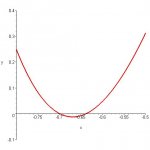let g(x)=5x^4 +6x +3 a) find the intervals on which g is increasing and decreasing. b) find the intervals of concavity and the inflection points.
i know first derivative will show intervals of increase?decrease and 2nd derivative shows concavity and inflection points. my first derivative was 20x^3+6 and my 2nd derivative was 60x. i believe i set the first derivative to zero to get intervals of decrease and the same for 2nd derivative but i dont really know
i know first derivative will show intervals of increase?decrease and 2nd derivative shows concavity and inflection points. my first derivative was 20x^3+6 and my 2nd derivative was 60x. i believe i set the first derivative to zero to get intervals of decrease and the same for 2nd derivative but i dont really know

